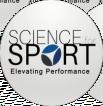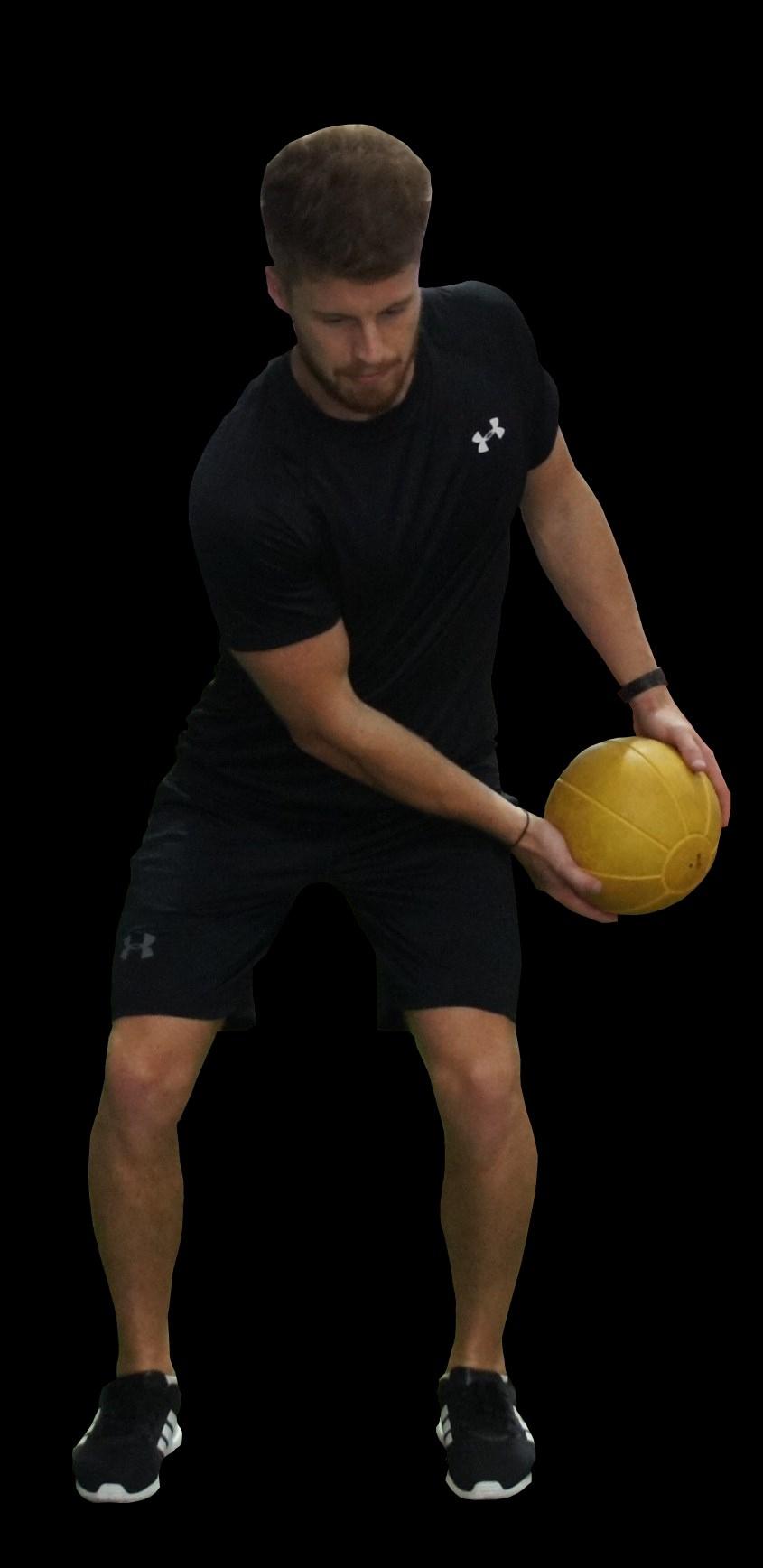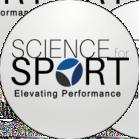

Study Details



Study Details
Prac�cal Takeaways from study


Related links to learn more about the topic
Reviewers comments on the study



James is currently the Head Strength & Conditioning Coach for the Romanian Rugby Union He has previously worked in America s professional rugby competition Major League Rugby with Austin Elite and the NZ Women ’ s National Rugby League Team He is a published author and has completed a MSc in Sport & Exercise Science from AUT Auckland NZ.

Cody is a strength and conditioning coach and adjunct lecturer at the University of Iowa. He has an MSE in Exercise Science from the University of Kansas and also holds a CSCS from the NSCA
Tom is the Head of Athletic Development at St Peters RC High School. He holds a Masters in S&C and has previously worked with West Bromwich Albion FC, Gloucester Rugby club, and Great Britain Equine Tom is our youth research reviewer at Science for Sport


Tom is currently an assistant professor in applied sports sciences and has worked in elite sport for over 10 years. Previous roles include working as a sports scientist at Liverpool FC, where he completed his PhD, and working across a number of other sports. He is passionate about physiology and has published papers on strength and conditioning, nutrition and youth development
Matthew is a Physical Therapist and the Clinical Director at a private Physical Therapy clinic in NYC. He has a special interest in the treatment of lower extremity/foot and ankle injuries along with helping runners and walkers to get back to what they love to do.



James is a Performance Nutritionist for the English Football Association and works alongside the England national teams (men's and women s). He is also a SENr registered performance nutritionist and holds a PhD from Liverpool John Moores University


Team sport athletes require a range of well-developed physical attributes to allow them to cope with training and competition demands. The assessment of these demands, including speed, strength, and power, is essential to ensure progression over time and the successes of training programmes.
Ideally, especially in youth athletes, such testing is deemed a positive by players and coaching staff alike, as it allows a chance to showcase development in the athletes. Often, coaches will observe such testing sessions out of interest for their young charges. It is unsure though whether their presence may impact the performance during these bouts.
The aim of this study was to determine whether their presence would influence performance as well as to understand the opinion of players and coaches towards the testing itself

15 male rugby league players were observed by 5 coaches during their testing. This consisted of two 20 m sprints, countermovement jump (CMJ), and prone yoyo test. The first session there were no staff present beyond the sport scientist running the session. Subsequently the clubs lead strength and conditioning coach, academy manager, and the first team assistant and head coach were present.
Players and coaches were then involved in semistructured interviews to determine their beliefs, attitudes and opinions towards physical performance testing.
In all tests the players performed better when the broader coaching staff were present.
The interviews also highlighted that performance testing was used to assess the ‘character’ of players, by the coaches. They felt their performance allowed them to understand whether they were at a sufficient standard to remain at the club.
The athletes though showed that they were not aligned to the ‘persistent hard work’ ethos of the coaches by not giving maximum effort unless they were being watched by those in a position of power


The findings from this study undermines the validity of such tests if comparing between the coaches being present or absent from testing sessions. Practitioners should consider the impact that having coaches present during testing may have.
Consistency is key and therefore it seems sensible that testing is always either done with, or without coaches there. Such continuity can be challenging to achieve though.

It is known to anyone who has tried to conduct performance testing that getting buy-in from athletes can be a challenge. They may want to hold back if they have a competition coming up or simply think they can get away with it. Some may even hold back and be open about that fact. This prevents their true best scores being scrutinised for not being good enough as they can fall back on ‘I wasn’t trying my best anyway’
As often is the case, looking to positively impact attitudes around understanding of testing would be beneficial. In an ideal world, our athletes would give 100 % as a default. This would allow better programme scrutiny and also a clearer picture of their athletic level.

In soccer, as with many other sports, the influence of sports science has grown dramatically over the years to assist with optimising performance. An understanding of match demands, via the use of global positioning systems (GPS) and optical tracking systems has allowed greater certainty that training demands are matched with competition requirements.


Such technologies have specifically allowed players playing in different positions to have more specific training loads based on their competitive demands whereas historically, this may not have been the case. Across different playing formations though, the demands of positions are likely to also change.
Previous studies investigating how formation might impact match running performance (MRP) have tended to focus on one team, which potentially could influence findings based on philosophies within those clubs. Therefore, the main objective of this study was to determine the effect of team formation on positionspecific MRP in elite-level football competition across a number of teams within the UEFA Champions League (UCL).
The participants (n = 174) in this study were elite football players from teams (n = 24) that competed in the group stage of the UCL. All data were obtained from 20 matches in the 2020/2021 season. Teams’ starting formation in these matches was as follows: 3-5-2 (n = 5), 4-3-3 (n = 12), 4-2-3-1 (n = 13), 4-4-2 (n = 7), and 3-4-3 (n = 3). Players’ MRPs were collected from teams which played in 3-5-2, 4-4-2, 4-2-3-1 or 43-3 formation, while MRPs from teams that played in 3-4-3 formation were not included due to the insufficient number of observations. Matches that included red cards were not analysed during the study due to the potential influence over athletic demands. If teams changed formation during a match this was also discounted from analysis.
In total, 226 MRPs were retrieved and classified according to footballspecific playing positions as follows: central defender (CD; n = 71), fullback (FB; n = 63), central midfielder (CM; n = 51), wide midfielder (i.e., winger) (WM; n = 27) and forward (FW; n = 14).
The MRP variables included the following: total distance covered (m) and distance in the speed categories of walking (<7.1 km/h) (m), jogging (7.2–14.3 km/h) (m), running (14.4– 19.7 km/h) (m), and highintensity running (>19.8 km/h) (m).




This study found a significant effect of team formation on position-specific MRP at the highest level of club soccer This indicates differences in physical demands among different team formations for all playing positions.
These findings show that conditioning programs should be individualised according to team formations, not just position. Specifically, greater conditioning status is required for (i) CDs and FBs playing in the 3-5-2 formation, (ii) WMs playing in 4-4-2 formation, and FWs playing in both 4-4-2 and 4-3-3 formations, (iii) CMs playing in 4-2-3-1, 4-3-3- and 3-5-2 formations.
As CDs and WMs experience slightly greater MRP in the 3-5-2 formations and 4-4-2 formations, respectively, coaches may also aim to keep their overall conditioning status at higher levels when playing in these formations.
Fbs and FWs perform greater high-intensity running in the 3-5-2 formations and 4-4-2/4-3-3 formations, respectively As such, and as high-intensity running is directly limited by the anaerobic threshold, their conditioning status should be at a higher level particularly in terms of anaerobic capacity when playing in these formations.
Regarding CMs, it was seen that their greater MRP at lower intensities occurred when in the 4-2-3-1, 4-3-3- and 3-5-2 formations compared to the 4-4-2 formations. As aerobic threshold defines players’ capacity to perform efficiently at a lower intensity, CMs should consider developing their aerobic capacity in those formations.
Central defenders in a 3-5-2 formation achieved greater highintensity running distance than in the 4-3-3 formation (mean difference (MD) 144 m). Fullbacks in the 4-4-2 formation covered less total distance than in 3-5-2 (MD = −762 m) and 4-23-1 (MD = −662 m). Central midfielders’ total distance in the 4-42 formation was lower than that in the 3-5-2 (MD = −645 m) and 4-3-3 (MD = −656 m) formations.
Wide midfielders’ walking distance in the 4-4-2 formation was lower than that in the 4-3-3 (MD = −484 m) and 4-2-3-1 (MD = −535 m) formations. Forwards’ high-intensity running in the 4-23-1 formation was lower than that in the 4-3-3 (MD = −363 m) and 4-4-2 (MD = −396 m) formations.
“Ultimately, this study may help coaches identify whether players can meet demands required in different potential team formations. To look at things from a different perspective, this study may also help coaches to select the appropriate team formation according to the available players and their physical abilities.”
“This information is especially important as appropriate ability to meet competitive physical demands may contribute to delaying fatigue. This should hopefully help to prevent a reduction in the technical performance of players, which ultimately may contribute to greater match successes.”
This month’s top research in strength & conditioning.
CAN YOU POTENTIATE PUNCH PERF WITH UPPER BODY CONDITIONING A
CAN YOU IMPROVE TACKLE OUTCOM GETTING STRONGER AND MORE POW IN RUGBY LEAGUE?
HOW DOES HOW WE KICK A BALL IMPACT ITS VELOCITY?
DOES USING VARYING ECCENTRIC LOADS IMPACT PHYSICAL PERFORMANCE OUTCOMES?


Post-activation performance enhancement (PAPE) is a phenomenon where subsequent speed or power exercise is enhanced by a prior conditioning activity (CA) typically of high force production. However, within amateur boxing, only 19% of boxers report using a CA as part of their warm-up before a fight (see ). Elite HERE boxers were more likely to include a CA potentially due to better access to performance practitioners. But one reason CAs may be less prevalent in boxing are the space and resource constraints. Therefore, this study aimed to assess acute performance enhancing effects of two punch novel CAs on punch performance.

Ten male senior elite amateur boxers (age = 19.7 ± 1.2 yr) participated in a within-subject repeated-measures cross-over study design. Meaning participants completed all experimental and control trials. They completed 4 separate testing sessions: a baseline physical assessment, 2 experimental trials, and a control trial. The baseline session consisted of a 1RM bench press and countermovement jump (CMJ) for height. Subjects then completed the three interventions in a randomized order All interventions started with a standardized warm-up of shadowboxing, dynamic activation and mobility, and a 3minute round of Boxing-Specific Exercise Protocol on a punching bag. At every 1-minute interval and before starting the protocol, subjects performed progressively harder punches on a vertically mounted force plate with the 100% intensity used for baseline data. Following this, subjects either rested (control) or performed 1 of 2 CAs: an elastic band (EB) or punch isometric trial (PI). The EB trial consisted of 2 x 5 reps of maximal concentric jab and cross punches with the elastic band. The PI trial consisted of 3 x 3 second maximal voluntary contractions against the vertically mounted force plate in the jab and cross stance. To measure the PAPE effect, 2 reps of the jab, cross, lead and rear hook were performed on the vertical force plate. Peak and average force, and rate of force development (RFD) were measured. Immediately after, 2 maximal effort CMJs with no arm swing were performed, measured by an Optojump with peak and mean jump height and flight time recorded. Both PAPE tests were completed at baseline (before the warm-up), 3-, 5-, 7-, 9-, 11-, and 13-minutes after the CA.




A CA at the end of a warm-up is a no brainer in my experience. Why not finish a warm-up with a high-intensity activity that can potentially improve sporting performance. At least in the short term. What I like about the punch isometric exercise is you’re not constrained by equipment and space. Simply place your glove against the wall in your various punching stances and you can get them done relatively quickly
This study suggests punch performance peaks between 7-9 minutes. By the time you perform these and walk to the ring, it’s typically more than 10 minutes. However, that doesn’t discount the use of a conditioning activity before a fight. It’s a characteristic of a good warm-up. It could be as simple as:
§ Dynamic movement & mobility
§ Shadowboxing & pad work
§ Conditioning activity (punch isometric)
While the punch isometric might be an option, it did nothing to potentiate the lower body which is essential to punching performance. Perhaps using a form of CMJ or plyometric exercise could enhance lower body RFD which is important for movements in amateur boxing.
No significant changes in CMJ height or jab performance were seen. However, the cross, lead, and rear hook all showed significant performance improvements compared to baseline.
Cross

Peak force significantly increased from baseline to 5-min (+111 N), 7-min (+142 N), and 9-mins (+146 N) after the CA. Significant increases were also seen from 3-min to 7-min (+103 N), and 9mins (+107 N). Average force significantly increased from baseline to 5-min (+101 N), 7-min (+135 N), and 11-mins (+123 N) after the CA. Significant increases were also seen from 3-min to 7-min (+117 N). No significant change was seen for RFD
Lead Hook

Peak force significantly increased from baseline to 7-min (+95 N), and 9-mins (+124 N) after the CA. Significant increases were also seen from 3-min to 9-min (+103 N). Average force significantly increased from baseline to 7-min (+95 N), and 9mins (+124 N) after the CA. Significant increases were also found from 3-min to 9-mins (+103 N). Time in peak RFD significantly increased from baseline to 7-min (+16,232 N.s-1) after the CA. Significant increases were also seen from 3-min to 7-mins (+11,665 N.s-1). Time in average RFD significantly increased from baseline to 7-min (+16,133 N.s-1), and 9-mins (+15,163 N.s-1). This was also seen from 3-min to 7-mins (+11,902 N.s-1), and 9-mins (+15,163 N.s-1), and from 5-min to 9-mins (+7723 N.s-1).
Rear Hook
Peak force significantly increased from baseline to 7-min (+148 N), and 9-mins (+162 N) after the CA. Average force significantly increased from baseline to 9-mins (+140 N) after the CA. Time in peak RFD significantly increased from baseline to 7-min (+23,713 N.s-1), and 9-mins (+19,746 N.s-1) after the CA. Time in average RFD significantly increased from baseline to 7-min (+21,734 N.s-1), and 11-mins (+16,785 N.s-1). This was also seen from 3-min to 9-mins (+17,121 N.s-1).
I found the choice of CA interesting in this study We know the legs play the largest role in punching performance and therefore, a CA for lower body strength and power may have been a better choice. However, this paper was able to show a PAPE effect for punching performance using punch-specific modalities. Now, the follow-up question to these improvements is were they due to having a better, extended warm-up? This study didn’t perform any statistical analysis between interventions which may have provided more information if they differed significantly

Effective tackling is key for successful defense within rugby league with tackle busts being a key for effective offensive play Muscular strength and power are critical contributors to tackle success. For example, wrestling an opponent to the ground while defending or fending an opposing player while attacking. While previous research has investigated the links between physical qualities and tackling ability, it has been performed with semi-professional players and a one-on-one tackling assessment. Therefore, this study aimed to examine the relationship between tackle outcomes during a match and muscular strength and power in professional rugby league.
A cross-sectional experimental study design was used in the National Rugby League (NRL) tracking fourteen professional players (age = 23.8 ± 4 yr). 5 consecutive competition matches from the start of the 2019 season were analysed for the following tackle outcomes:
Attack tackle outcomes
§ Play-the-ball speed
§ Broken tackles
§ Line breaks
§ Post contact meters

§ Tackle to play-the-ball contest won
§ Tackle to play-the-ball contest lost
Defense tackle outcomes
§ Effective tackle
§ Ineffective tackle
§ Dominant tackle
§ Marker
§ Meters conceded post contact
§ Tackle to play-the-ball contest won
§ Tackle to play-the-ball contest lost
Subjects were tested for 1RM back squat, bench press and bench pull. Power was measured with the countermovement jump (CMJ) and standing broad jump (SBJ) height, distance, vertical and horizontal ground reaction force, takeoff velocity, peak force and power, rate of force development, and concentric impulse. For upper body power, the plyometric push-up was assessed for the same variables except height.
Peak power in the upper and lower body are likely important factors for attack and defence tackle performance. The development of this is relatively straightforward:
§ Lift heavy weights.
§ Throw moderate and light loads.



§ Jump and sprint regularly with varying loads. How these exercises are balanced comes down to training age and sport schedule.
If you want to get more granular when individualising programs in a team setting, you can use any or all of the following tests:
§ Reactive strength index.
§ Dynamic strength index.
§ Force-velocity profile.
What’s more interesting is jumping peak power having large correlations with losing a defensive tackle situation. It was theorized since the majority of the tackle contest is completed on the ground, lower body power may not increase the likelihood of winning the tackle contest.
Þ Further, plyometric push-up concentric impulse correlated well with ineffective tackles. This may support the case of how important tackle technique is. As defence is extremely complex, it could be that players are producing peak force too quickly or not enough force over a long time period leading to reduced tackle efficiency Therefore, carving time within a training week to work with skills coaches on tackle technique can compliment your strength and power training. For example:
§ After a gym session on the mats.
§ After a field session.
§ Drills as part of the on-field warm-up before a defence session.
Interestingly, no 1RM measures significantly correlated with tackle outcomes.
Players with greater horizontal lower body force and power from the SBJ showed very large significant correlations with faster play-the-ball speeds.
Plyometric push-up peak power showed very large significant correlations with post-contact meters. CMJ peak force showed similar results however this was not statistically significant.
CMJ peak power and SBJ distance showed large to very large associations with losing the tackle contest in defence.
Plyometric push-up concentric impulse showed very large significant associations with ineffective tackles. Dominant tackles were not correlated with any measure of strength and power
In my opinion, this study highlights the complex nature of trying to correlate isolated physical qualities to complex technical skills. No doubt physical qualities such as strength and power are important in collision sports like rugby league. However, tackle technique and defensive reads play a huge role in tackle performance. This is especially the case as playing experience alone is likely to improve tackle performance (see HERE). This is why I find it vital to start contact training at the beginning of pre-season. There’s still a school of thought to avoid contact until the end of pre-season leading into games. In my opinion, it’s too late. Contact is a skill and needs to be trained from week 1. That doesn’t mean no pads full contact hits. It means scaling back and developing the fundamental skills underpinning a great tackle.

OBJECTIVE
Kicking may be considered the most important skill in soccer as it is responsible for the majority of goals scored. Although it is considered a full body motion it has been defined as a coordinated open chain movement of the lower limb that follows a sequential proximal-to-distal pattern. That is to say the movement starts at the hips, before moving to the knee and finally ankle.
Much research has been done looking at kicking motion in the sagittal plane, though some work shows that the movement of the hips in the frontal and transverse plane are important in determining the success of the kick.
Some studies have also attributed greater kicking velocity to greater values of hip extension and knee flexion. Very few studies though have looked beyond the point of contact, into the follow through phase. Most of these studies too have been done on men at a collegiate level of play
The purpose of the current study was to use principal component analysis (PCA) to extract movement patterns from hip and knee joint angle time-series data and to determine if the extracted movement patterns were predictors of ball velocity during a soccer kick in male and female professional players.
Twenty-three female (age = 22 ± 5 years, weight = 60.7 ± 9.5 kg) and nineteen male professional soccer players (age = 21 ± 2 years, weight = 71.5 ± 6.2 kg) were recruited to participate in the current study A six camera motion capture system recorded kinematic data at 250 Hz of 24 reflective markers attached symmetrically on the left and right sides to the anterior superior iliac spines, posterior superior iliac spines, heads of the greater trochanter of the femur, lateral thighs, medial and lateral epicondyles of the femur, lateral shanks, medial and lateral malleoli, calcanei (directly on the boot), and the heads of the second and fifth metatarsals (directly on the boot).

Each participant then performed a general ten-minute warm-up, which was approved by the strength and conditioning coaches of the respective teams, before they performed warm-up kicks until they felt comfortable with the markers and test setup.
For the collection of the dynamic kicking trials, each participant was required to kick the ball into a 1 × 1 m marked target that hung on a net 7 m away. Players were instructed to kick the ball as hard as possible using the instep kicking technique with a four-step run-up, such that the support leg was placed on the kick area. This process was repeated until each participant had performed five kicks that struck the target.
The kicking motion was divided into four phases based on the following events: backswing (from toe-off of the kicking leg until its peak hip extension), leg cocking (from the peak hip extension until peak knee flexion), the leg acceleration (from the peak knee flexion until ball impact) and follow through (from ball impact until peak hip flexion).




The correlation results from the current study indicated two principal components associated with specific hip joint angle movement patterns (i.e., hip flexion/extension and internal/external rotation) were associated with kicking performance. This was only the case in male soccer players though.

Specifically, the patterns captured differences between 30% and 100% of the kicking motion in hip flexion/extension angles, where a greater range of motion was associated with faster kicks; and between 15% and 70% of the kicking motion in the hip internal/external rotation angles, where a delayed internal rotation resulted in faster kicks.
Results showed better kicking performance in male players was associated with a greater difference between the hip extension at the end of the backswing/beginning of the leg cocking phases and hip flexion at the end of the follow-through phase and a delayed internal rotation of the hip. No correlations between ball velocity and hip and knee kinematics were found for female players.
“Kicking velocity in male professional soccer players was correlated with the pattern of movement associated with the hip joint angle. Particularly, better performance was associated with greater difference between hip extension angles at the end of the backswing and hip joint angle flexion at the end of the follow-through phase. It was also linked to a delayed internal rotation of the hip.”
“The authors propose that kicking technique may focus on a greater follow through to allow the results from this study to translate into the game. I think that it may be challenging to impact the technique of the kick though perhaps over time small changes could occur. I think it is also important to factor in flexibility training and strength through the full range of the hips to allow not only this increased range of motion but also the application of high power when it is achieved.”
In team sports performing high-intensity actions such as sprints and changes of direction can lead to better athletic performance. To improve these abilities strength training is often employed to improve muscular force production capabilities. Often, the forces produced on the field are varied and unpredictable as well as often being eccentric in nature as athletes react to situations around them.

Some argue that due to the variability of force production required within competitive situations that training using identical repetitions may limit the transferability of benefits to the field. Some studies have indeed shown that varying the load during training can lead to increases in muscle strength. Others argue that this is a sub-optimal way to train that may not always yield desired results.
The aim of this study was to analyse the effects of unexpected eccentric load variability for strength training using rotary inertial devices (RIDs) with team sport players. It was expected this may lead to increases in physical performance.
Sixty-three men were randomly allocated to two experimental groups: variable (VTG, age 22.7 ± 2.7 years; weight 76.2 ± 9.8 kg) and stable (STG, age 23.2 ± 2.8 years; weight 77.6 ± 16.7 kg) training group) and a control group: (CG, age 23.3±3.7 years; weight 72.4±5.5kg).

Experimental groups trained with the same average load of half-squat exercise twice a week for six weeks using RIDs with (VTG) and without (STG) an unexpected variability of the load. The squat force was measured for every session with force plates. Counter-movement jump (CMJ), sprint, and change of direction performances were measured pre and post-test.



Despite the fact that most movements that occur during competition are varied and unpredictable, training with such variability did not yield additional benefits above those associated with more traditional methods of RID use.
The authors proposed that using an RID already provides relative variability so an increase in that variability was not additionally beneficial. It is beneficial more broadly to note that the use of the half-squat with eccentric overload on an RID is useful in improving sport specific skills and might be considered by a practitioner as an addition or change to their current programming.
Countermovement jump performance improved for VTG (p = .014; ES = 0.7) as well as STG (p = .005; ES = 0.79) but no changes were seen within CG. No changes were seen in any other of the performance tests. Therefore, in contrast to the author’s hypothesis, the improvements in physical performance of team sports athletes were similar in a RID training program with and without an increment of the variability of the load.
“This study considers an interesting idea that previously has shown some evidence to potentially be useful. I feel that for many people this would be quite complicated to implement though, and it is in a sense good to know that similar benefits can be had from more traditional RID training.”
“In my experience, a lot of athletes are not overly successful at simple resistance training implementation in their programmes. As a result of this, I think it is important to ensure that you’re getting the basics of periodised progressive overload right before striving to utilise more complex training methodologies. Often, keeping it simple and ticking off the basics will provide an excellent foundation for success.”


This month’s top research on technology and monitoring.
IS THE REPETITION IN RESERVE METHOD RELIABLE FOR YOUNG NOVICE LIFTERS?

HOW TO FREQUENTLY ASSESS CARDIORESPIRATORY READINESS.
HOW TO USE A FORCE PLATE TO RELIABLY ASSESS HIP EXTENSION STRENGTH.

When programming strength training plans, what looks good on paper may not always play out as anticipated. This is due to the dynamic readiness and reactive nature that athletes can have to training, as well as influence from their environment (e.g. outside stressors, sleep, nutrition, relationships, etc.). To combat this unpredictability, coaches have begun prescribing relative intensity based on a subjective perception of exertion by using a number of repetitions in reserve (RIR) relative to failure with notable success (see ). Prescribing training HERE intensity based on RIR targets (e.g. 1-RIR), allows for intra workout adjustments and presents auto-regulatory opportunities that make training arguably more productive than basing loads off of a previous or predicted one-repetition maximum (1RM).
However, the proven reliability of a RIR measure is unestablished and proper investigation would improve the potential of its implementation in training prescription. Therefore, the objective of this study was to assess the reliability of using the RIR method with deadlift and bench press in young novice males.
Fifteen males (age 17.6±0.9-yr) with less than 6-months of resistance training experience participated in four testing sessions, each separated by seven days. In the first session, participants progressed to 1RM loads in both the deadlift and bench press for use with loading in subsequent sessions. During this initial assessment the RIR scale (see ) was HERE explained and introduced. Due to the importance of participants understanding the application of the RIR scale (see HERE), in the second visit, participants became accustomed to the RIR scale by using loads relative to the previous 1RM test (e.g. 65-, 70-, and 75-%) for sets of 3-8 repetitions (reps). Following each set, participants reported their relative RIR score and loads were progressed until a 2-RIR was reached for deadlift and bench press.
The third and fourth sessions were dedicated to testing the reliability of the RIR method, where procedures (e.g. exercise order, rest periods, and even restricting knowledge of load modifications by having participants leave the room) were normalised for each participant. Participants progressed loads for three randomly decided rep targets (3-reps, 5-reps, and 8reps) until a 1-RIR was achieved. These final two sessions of using the RIR-method were analysed for test-retest reliability as a means of prescribing intensity for novice youth males.



The most important aspect related to implementing the RIR-method is appreciating the critical importance of education around what it is, how to use it, and what it feels like (see ). Coaches must take the time to explain HERE (clearly, concisely, and consistently) what the description of a 1-3-RIR looks and feels like, as well as giving the opportunity for athletes to experience it, with immediate affirmation from a coach during and after a given set.

§ By doing this, athletes can truly understand efforts necessary to effectively increase strength and build muscle. Also having a sense of how strong they truly are without having to go to maximal (0-RIR) intensity
There is evidence to suggest that increases in strength and hypertrophy can be experienced, especially in youth populations, when avoiding failure (see ). Not only is training potentially more productive the need (time) for recovery HERE is decreased which allows for more frequent training. Which is another important aspect with training young athletes that need to gain experience.

By prescribing sets in the 1-3-RIR range, training can be appropriately adapted to the athlete, improving both quality and effectiveness of their efforts for each repetition, set, and session.
Likewise, it is important to recognize that this research proved reliability specifically for 1-RIR in the deadlift and bench press. Which is consistent with other research around the improved validity in the RIR estimation (see ). Encouraging HERE training closer to failure (lower 1-2-RIR values) versus higher values (e.g. 4-5-RIR), that may be more difficult to accurately gauge.
§ If higher RIR values are being prescribed, it is likely best practice to obtain some sort of velocity-based feedback instead. Incorporating velocity-based training, using a device to measure barbell speed, has shown a relationship with RIR values (see HERE).
Prescribing loads based on a 1-RM can be detrimental to athletes if not paired with an additional monitoring measure (e.g. RPE/RIR report or velocity measurement).
§ The assessment itself of the 1RM is time intensive and ultimately a moving target (constantly fluctuating based on daily readiness). Not to mention initially, it has a learning curve associated with it as well (see HERE).
§ Not to mention, 1RM testing can be a risky endeavour for someone inexperienced with maximal loads. Adding unnecessary fatigue to their training and putting them at risk for potential injury, with little return or importance with most athletes. Maximal strength can be assessed in other ways (e.g. isometric or repetition maximums to a 1-RIR).
§ Lastly, using a %-1RM method can either under- or over-shoot the appropriate load for a given day and miss out on the opportunities allowed with an autoregulatory approach like the RIR-method.
Coaches can use the RIR-method within training to monitor readiness and note progress over time.
§ Especially with a youth population that can experience rapid improvements in a short period (see HERE).
§ Specifically, coaches can use the RIR-method to identify potentially erratic recovery rates athletes can experience at times. This can be accomplished by using the subjective feedback of how many repetitions can be accomplished at a given load as a marker of readiness. In turn, modifications can be made to subsequent volume and intensity prescription for that given day (see HERE).
The between-session reliability of 1-RIR for a given rep target was ‘highly reliable for both the deadlift and bench press. Supporting the prescription of 1-RIR in providing an accurate and individualised training experience across sessions.
As rep targets changed, but 1-RIR remained, the loads that were lifted were in proportion (e.g. higher rep targets (8reps) used lighter loads then lower rep targets (3-reps)). Based on this information and with proper instruction, it appears that within as little as 2 sessions, youth athletes can become accustomed to reliably using the RIR-method to prescribe and regulate loads when strength training.
“Ultimately, we must continue to appreciate that athletes are not machines, they are dynamic organisms that have feelings, thoughts, emotions, experiences, and habits that all impact readiness and performance. The goals of training should be to be effective and efficient, providing the least stimulus necessary, for the greatest return. Rather than bashing on faults and hangups associated with %-1RM load prescription, this research helps us to offer a reliable solution, addition, and alternative to embracing the goals of productive and consistent training.”
“Coaches are able to not only prescribe appropriate intensities for a session, but can also periodise loads based on modifying rep targets (e.g. decreasing reps, offers an opportunity to increase intensity). While at the same time remaining flexible and adaptable for the given day and athlete’s readiness. This moves us closer to the ‘optimal’ experience we are after for athletes, versus working from a perfectly planned linear progression that is highly unlikely given outside influences. The RIR-method allows coaches to encourage efforts and progress, while at the same time, appreciating their perceptions.”

The Yo-Yo Intermittent Recovery – Level 1 (Yo-Yo IR1) is a test performed to volitional exhaustion (maximal effort) that is commonly used to assess fitness in soccer players. It involves players running 20-m shuttles (out and back), followed by 10sec of walking rest until they can no longer achieve the progressively challenging time-distance standard (elite male athletes run an upwards of 20-min, see ). This serves as a HERE great test that can gauge preparedness following an offseason training period.
However, given that this test can be challenging and fatiguing it is difficult to implement frequently or during periods of training dedicated to sport-specific development. However, there is opportunity with using a sub-maximal 6-min Yo-Yo IR1 (Yo-Yo Ir1sub), to where the same Yo-Yo IR1 test is terminated after only 6-min. With this protocol, research has shown that the athlete s heart rate (HR) in the final minute of the test correlates with a player’s relative maximum HR (see HERE).
To date, research is lacking around the use of the Yo-Yo IR1sub in professional soccer players, and the ability to detect meaningful change using this sub-maximal test as a monitoring strategy Therefore, the purpose of this research was to examine the reliability and sensitivity of change for a Yo-Yo IR1sub test during a 6-wk professional soccer pre-season.
Fifteen professional male soccer players (age 20±2-yr) from the same 1st tier English Premier League team completed a full YoYo IR1 prior to, and at the culmination of, a 6-wk pre-season period. During these tests, the level achieved, as well as maximum HR was recorded for each athlete. Additionally, to start each week of the preseason period, athletes completed the 6-min Yo-Yo IR1sub. During these tests the percentage average HR (%Avg. HR) and percentage of HR maximum (% HRmax) were recorded for the duration of the 6-min test and relative to the maximum observed in the first full Yo-Yo IR1 completed at the start of the pre-season. Heart rate data (pre- and post-HR maximum, and insight from the weekly Yo-Yo IR1sub tests) were compared for change and reliability across the pre-season training period.
The Yo-Yo IR1sub proved to be both reliable between sessions, as well as sensitive to change across the 6-wk preseason period.
Ÿ This is in line with previous research in elite youth soccer (see HERE)
Across the 6-wk preseason, these professional soccer players saw roughly a 12% improvement to their Yo-Yo IR1 performance, suggesting an improvement in fitness. Likewise, this improvement was also noted wk-1 to wk-6 in the %Avg. HR and %HRmax, suggesting the ability of the shorter test to recognise physiological change.






Given the sub-maximal intensity (~75-95%) and short duration (6-min) experienced with the Yo-Yo IR1sub, it provides both a testing and potential minimal effective dose training tool that can be used to assess cardiorespiratory readiness of athletes during a pre- or even in-season period.

Ultimately, this serves as an excellent high-frequency monitoring strategy that can help coaches affirm the training loads and ability to recover (possibly even from competition if used in-season) by providing objective data relative to HR-response.
Coaches could consider including this protocol at the beginning of a session following a thorough warm-up for the most accurate representation of fitness potential, rather than waiting until the end of a training session where fatigue could negatively influence performance.
Given the immediate improvements from week 1 to week 2 with %HRmax results (decreasing ~5%), there is a potential training effect or adaptation that occurs from experiencing the test in coordination with the on-field practices themselves. By doing this, the coach gains objective feedback regarding readiness and performance potential. Also, the athlete gains feedback that can help build confidence if performance improves (the test becomes easier to complete).
The results from the Yo-Yo IR1sub provide feedback regarding the ability to recover and forces reflection on the athlete’s habits or suggests potential changes that need to be made to modify training or lifestyle habits (e.g. increasing sleep, nutrition, or introducing a potentially helpful modality (e.g. cold-tub, massage, etc.)).

“Cardiorespiratory fitness is an ability of paramount importance that will support an athlete’s performance (mentally and physically), as well as their ability to recover (see HERE). Therefore, identifying ways to assess, monitor, as well as train this quality is critical to the success of an athlete and their ability to perform throughout a long in-season. Based on previous and this specific research, it appears that the YoYo IR1sub provides all of those opportunities. Serving as a testing, frequent monitoring, and a performance enhancing intervention for teams to implement with their athletes and provide a positive return for coaches and athletes.”
“This serves as a great example of involving technology (heart rate monitors) to provide objective feedback that can be paired with other performance data. Possibly exploring additional performance related to speed (sprinting) or power (jumping) data that will provide a holistic representation of a soccer athlete s readiness potential. If those options are not feasible, another pairing with the objective HR-response data would be a pre-training subjective report of readiness that may help identify an increased need of recovery or affirm that the athlete is adapting to the current training loads.”
Want to learn more?
Then check these out...
When identifying an assessment protocol, the goal for a practitioner is to implement a test that is reliable. Especially in the realm of athletic development, having measurements that can be done efficiently and provide comparable insight are critical to the training process. The development and inclusion of technology (e.g. force plates, dynamometry, and electromyography (EMG)), that were historically only used in a research setting, are more realistic and prevalent in the sport performance space. These technologies provide sensitive and objective measurements that provide accurate and reliable feedback.

Regarding specific assessments and performance, the musculature of the hip, specifically hip extension, are critical in running and jumping. However, there is limited research devoted to this musculature as compared to muscles about the knee, and no research utilising a closed chain assessment of isometric hip extension strength. Therefore, the purpose of this study was to determine the reliability of a specific hip extension assessment using a force plate, the comparability to isokinetic dynamometry, as well as to explore EMG activity in the involved musculature at various angles of flexion.
Fourteen physically active males (age 25.1±3.8-yrs) participated in this study All participants completed the reliability portion of this research in four sessions, each separated by one week. In each session, participants laid supine with hips flexed at 40° relative to the torso, and heels placed on a wooden block that sat atop a force plate (see ). Following a standard Figure 1 warm-up, each participant completed nine total efforts (three bilateral and unilateral of each leg), where they pushed down through their heels and the force plate (‘as hard and as fast as possible’) for three-seconds. Peak vertical force, peak extension torque, and torque at 150-ms after onset were measured and compared for reliability
Secondarily, ten of the original participants completed a range of tests in a separate session, performing bilateral efforts of the original hip thrust on the force plate at four different hip flexion angles (20°, 30°, 40°, and 50°), comparing peak force and torque data at each angle. Further, electromyographic activity (peak EMG values) for the vastus lateralis, bicep femoris, and gluteus maximus muscles was taken using electrodes attached to the skin (see ) for comparison between various angles of set HERE up.
Lastly, for comparison, ten of the original participants completed three different assessments using an isokinetic dynamometry device. Only left-leg assessments were possible, but still assessing peak torque. The first assessment was an isometric test with similar set up to the closed-chain hip thrust on the force plate (supine with, 50° hip flexion), as well as a standing and supine set up using an isokinetic dynamometer
Data was examined for repeatability within the isometric closed-chain hip thrust on the force plate, the variance in results across the different joint angles, as well as any potential relationship with results compared to similar assessments using a dynamometer




Although results suggest that this test is simple enough that a familiarization session is not necessary. It is arguable that ‘best practice’ for any assessment is to ensure at least one exposure to the test prior to collecting data that will be used for baseline values and comparison to future tests. Doing this ensures that the athlete feels comfortable and confident, providing a result that is valid.
Using either a force plate or dynamometer to measure maximal force production capability is a great way to assess strength in specific positions and postures. Coaches should examine the movements and positions that they want athletes to be strongest in and identify ways of constraining this position for repeatable and reliable measure.
§ Further, this means of assessing strength is not only more repeatable and reliable, but also arguably safer and less invasive than having an athlete perform a specific lift (e.g. squat, deadlift, bench press) to assess strength.
With the force plate hip thrust specifically and examining the EMG results, this is a great example of a functional test that showcases the interaction of musculature versus the isolation of one specific muscle. Given the prevalence of research around the knee, practitioners often get hyper-focused on one specific joint and disregard the involvement of musculature up and down the kinetic chain that influences movement or performance potential.
Practically speaking, coaches can use an assessment like this for an entire team of athletes. Develop standards of performance based on averages and standard deviations, as well as identify athletes that are at high risk of injury due to asymmetry
§ Using the data from the assessment, coaches can prescribe specific exercises focusing on improving hip extension strength (e.g. hip thrust, Romanian deadlift, step up) and perform follow-up tests consistently (every 3-4-wk) to note possible improvements and build an athlete’s confidence.

§ Further, the baseline data provides coaches with a measure of preparedness that can be used for comparison across a season to monitor for readiness and identify potential fatigue and strength loss that can occur during an in-season period. With this monitoring insight, coaches can manage workload and guide training prescription (e.g. increase time for recovery or training).
The repeatability of the isometric closed-chain hip extension test on the force plate was very good, and even superior to data reported previously using isokinetic or handheld dynamometry when assessing hip strength (see HERE).
§ Specifically, peak values of force or torque were more reliable than measures of torque at 150-ms. Further, given the reliability seen within the first two sessions (small to moderate change), a familiarization session is arguably unnecessary This suggests that the test is simple enough for practitioners to collect usable data in the first exposure to the test. However, it is important to recognise that reliability did improve in the third and fourth exposure, and opportunities to familiarise participants is beneficial to collecting valid and reliable information.
Although the range of hip flexion angles measures was small (30°) there was a variance in peak force (greatest at 50°) but an insignificant difference in torque due to the nature of the measure involving both the hip and knee as forces were measured at the ankle.
Surface EMG changed with various hip angles. The activity in the bicep femoris increased as hip flexion was reduced (50° to 20°), and gluteus maximus activity decreased with lesser hip flexion. Given the arrangement of the test (closed-chain) and point of measurement (ankle) this interaction was recognisable.
Although absolute values of torque differed when compared to the dynamometry measures, deeming them incomparable, there was at least a correlation between the two. Suggesting practicality of the measure.
“This novel hip extension assessment is a great example of constraining and simplifying a test in order to provide repeatable and reliable results. The standardisation in procedure - strapping the athlete into position, measuring the hip angle and distance from the force plate, as well as the instructions on how to perform the test are all ways that coaches can improve the reliability of any assessment that is implemented.”
“Tests lose their reliability when they become complex and a lot of variance in movement solutions and performance can lead to complex and uncertain results, that potentially bring about more questions than answers. This is a perfect reason why isometric tests have become more and more common; they are simple and constrained to the point that an athlete can execute one simple goal –produce as much force as possible. By doing this, the neuromuscular system is able to showcase its full potential. Testing strength in this manner gives the coach full confidence in the abilities of an individual and helps to classify someone as strong and symmetrical. This is especially evident in a test that has the opportunity to assess things unilaterally.”
“Once these tests are identified and done consistently, they can assist in directing training serving as an assessment and monitoring tool that enhances performance and mitigates the risks of injury.”
This month’s top research on fatigue and recovery

THE EFFECTS OF DIFFERENT TY RESISTANCE TRAINING ON EFF PAIN PERCEPTION
HOW DO MUSCLES RESPOND T DIFFERENT TYPES OF COMPOU ISOLATION RESISTANCE TRAIN
WHAT IS THE BEST WAY TO TRACK FATIGUE AFTER RESISTANCE EXERCISE?




OBJECTIVE
Low load resistance training combined with blood flow restriction (BFR) has been utilised to promote strength gains for clinical populations who cannot tolerate high load resistance exercise programs. Although this has been reported, there are inconsistencies in the research as to whether or not the strength gains with BFR are equal to, less than or greater than high load resistance training. With these training programs, it is also important to consider the effects of perceived effort along with pain levels felt as this will drive motivation to complete them. As such, the current study aimed to investigate the effects of a progressive low load BFR and high load resistance program over eight weeks. Perceptual responses including subjective effort and pain levels were measured while objective measures of muscle strength and size were compared between the two programs.
Sixteen healthy, physically active men ranging from 18-35 years old participated in the study Training sessions were performed twice a week for eight weeks. Perceptual responses, via rating of perceived exertion (RPE), and pain levels, via a Visual Analog Scale of 0-10, were assessed after the end of each session.
The protocol consisted of a unilateral knee extension exercise. At the beginning of each session a warm up consisted of running on the treadmill for five minutes followed by the following resistance training.
High Load Resistance training - performing three sets of eight repetitions at 70% of 1 RM.
Low Load Resistance training - performing three sets of fifteen repetitions at 20% of 1RM with the use of BFR maintained throughout the session. The BFR cuff was inflated to 80% of the subjects AOP (arterial occlusion pressure).
After four weeks of the protocol, 1RM was reassessed and the load was adjusted for training over the final four weeks. Along with this, quadriceps cross-sectional area(QCSA), pain levels and RPE were reassessed at the end of the eight weeks.




When comparing high load resistance training to low load resistance training with the use of BFR, it was found that strength gains were increased through high load resistance to a greater extent. With this, the perceived effort of the program was greater as well. This may be due to a greater sensation of tension on the muscles and tendons with a higher mechanical overload. On the other hand, higher levels of pain perception were found with BFR training, which may be due to metabolic changes induced by the arterial occlusion that occurs with it. Although there were differences in both groups, there were positive strength changes found with each training method which shows value to their use. Moreover, low load BFR training seems to be a safe option to utilise for positive strength gains when high load training is contraindicated. Limitations in this study exist however, with regard to the population utilised as only young men were studied. Changes may occur with a different age group or with a different exercise such as an upper body movement as seen in other studies.
Following eight weeks of training, 1RM increased in both groups but to a greater extent for the high load group. Muscle size measured via MRI increased for both groups but no significant difference was seen between the two. When comparing perceptual responses, there was a greater RPE value with the high load group but a greater pain perception level with the low load BFR group.
“High load resistance training produces greater change in strength along with less perceived pain when compared to BFR training. This was shown in a healthy male population so it may differ when comparing an older population or upper body exercise. Rehabilitation professionals should be mindful of this when prescribing programs.”
“BFR training produces blood occlusion throughout, which can lead to metabolic changes along with higher levels of perceived pain. This is an important consideration for the acutely injured athlete or patient.”
“BFR is a viable strength training program in most cases and although the perception while using may feel more painful, it may be beneficial for those limited with equipment.”
Changes in the variables associated with resistance training may induce different responses when comparing muscle soreness (MS), limb circumference (LC) and muscle thickness (MT). These changes may also produce differences in maximal strength and activation of the muscles involved.
Multiple joint exercises (MULTI) have been viewed to be more effective for inducing metabolic stress along with mimicking daily tasks and sport specific movements. On the other hand, single joint exercises (SINGLE) require lower technical demand and have been thought to be beneficial for targeting specific muscles while correcting imbalances.
The purpose of this study was to compare the differences in MS, LC and MT in a back squat (MULTI) and a knee extension (SINGLE) exercise.
Ten males aged between 19-34 yrs, who participated in resistance training at least three days per week for two to five years on average and were free of injury, participated. They were split into two groups: knee extension or back squat.
1 RM and 8 RM were measured for both exercises along with assessment of health via the Physical Activity Readiness Questionnaire (PAR-Q).
Prior to completing the exercise protocol, there were baseline measurements for the following:
§ Muscle thickness via ultrasound. This was characterised as muscle swelling.
§ Limb circumference on the right rectus femoris

§ Muscle soreness via a Visual Analog Scale from 0-10 (0 being no soreness and 10 being extreme soreness)
§ Overall wellbeing, which was a scale assessing subject’s fatigue, sleep quality, general muscle soreness and stress levels on a five point scale
Participants performed the maximal repetitions that they could manage until failure for the study protocol. Their loads were 8RM for five sets, performed at four seconds per repetition. Participants completed the exercise protocol for their respective exercise twice, with 96 hours of rest between.






When comparing these two exercises, back squats produce more changes in the muscle when compared to a knee extension exercise. This was measured via changes in the quadriceps. The multi joint exercise most likely produced more damage due to the elevated metabolic demand that is induced from the increase in contributing muscles like the hamstrings and gluteals. This could consequently have a greater influence on the level of fatigue experienced by the participants.
With the increase in muscle damage experienced by the multi joint exercise, a single joint exercise may be more beneficial for an in-season athlete who is either dealing with or trying to prevent injury A compound activity however, can be beneficial as well when done with correct form and dosed appropriately to avoid injury
These training results can influence the way that coaches and rehabilitation professionals prescribe exercise depending on the goals of the client.
Limitations in this study are present and include the fact that no direct assessment of muscle damage was adopted along with a limited sample size and use of only two exercises.
Muscle soreness was elevated with both exercises from baseline to 36 hours post-exercise. The muscle soreness was measured as higher in the back squat exercise when compared to the knee extension at both 24 and 36 hours post exercise.
For leg circumference, increases were found with both exercises at all measured times. The back squat however, produced greater changes immediately following the exercises. Muscle thickness was elevated at all times measured but was also highest in the body squat compared with the knee extension immediately and 36 hours after the exercise.
There was no significant difference found with the wellness scores. Based on these findings, it was concluded that multi joint exercises produce more muscle damage when compared to single joint exercises.
“This study provides beneficial information on the muscle damage that may occur from multi joint and single joint exercises. It would be interesting to compare these results when looking at a single joint exercise targeted toward the hamstrings, glutes or calf musculature in place of the quadricep”.
“Rehabilitation professionals and coaches need to understand the important differences between multi joint and single joint exercises and prescribe their programs based on an individual's needs. A client may need to have a program focused on single joint rather than multi, when less fatigue and a faster recovery is desired.”

Resistance training has long-term positive effects and is a proven way to improve physical fitness, muscle strength and power A training session performed with high intensity or excess overload stress can lead to damage in the muscle and rise in blood markers, which can elicit an inflammatory response lasting for several hours or days. This can lead to prolonged soreness and an overall decrease in muscle function.
As a result, the knowledge of a proper way to track fatigue markers following resistance training is vital in order for the individualisation of recovery time between sessions. The purpose of this article was to investigate how to identify the markers over time of muscle fatigue after a strenuous lower extremity resistance exercise program.
Sixteen healthy men aged between 18 and 26 participated in the study; they all had about five years of experience with resistance training and had a 1RM of 147 ± 33 kg for a back squat.
The participants had their 1RM measured in the first session along with anthropometric measures. A week later, measures of neuromuscular performance tests, heart rate variability and the Perceptual Recovery Scale (PRS) were administered, followed by the resistance exercise program. This consisted of eight sets of 10 repetitions of a back squat with 70% of their 1RM with two minutes of rest in between sets.
The following markers were measured again at 24, 48 and 72 hours post resistance training program:
§ Countermovement jump
§ Bar velocity



§ Isometric mid-thigh pull
§ Step counts
§ Heart rate variability
§ Subjective assessment via the Perceptual Recovery Scale


Tracking muscular fatigue is essential for athletes who participate in resistance training. Avoiding excessive overload and stress to the muscles allows athletes to make positive strength gains, whether in-season or just to continue healthy habits. The use of a countermovement jump to track this fatigue has merit, based on the findings in this study

The subjective assessment of the participants’ perceived recovery from the program showed consistent decreases from baseline measures. Athletes and the general population would benefit from using this type of assessment as they continue training efforts.
The measurement of the mid-thigh pull for this type of study may have been flawed due to it testing isometric strength. This type of contraction is influenced less by muscle inflammation and alterations in joint mechanics that are generated with most lower extremity resistance exercises.
Heart rate variability was not sensitive for tracking over multiple days and may be of better use when tracked over several hours, as in other studies.
Step count did not significantly change. This may have been influenced by daily activities and movements that the athletes’ took part in. This measure may have produced different results if the type of lower body movement was different or if upper extremity exercises were utilised.
In the study, the authors characterised muscle fatigue by a reduction in CMJ performance, which occurred at 24 and 48 hours post session.
The PRS scores showed the greatest sensitivity for the tracking of muscular fatigue as defined by the authors after an acute session of resistance exercise, as it showed consistent reduction at all moments tracked (24, 48 and 72 hours).
The following results were found for the other measures tested in this study:
§ Bar velocity showed significant reduction but only at the 72-hour mark.
§ Isometric midthigh pull mean force decreased at 24 hours but peak force decreased only at 48 hours.
§ HRV and step count showed no significant changes from baseline.

“Resistance exercise is essential for training programs but must be tracked properly in order to avoid over-stressing the muscles involved. Understanding their own perceived recovery may assist athletes and people who consistently exercise to recover more efficiently and produce gains in strength.”
“Countermovement jump decreases occur after an exercise program consisting of repetitions of squat patterns. Avoiding this type of movement along with other high intensity / dynamic closed kinetic chain movements on consecutive days in a training program may be beneficial to avoid overtraining.”
“Although this study showed positive correlations and results, it was limited by the participants studied. It would be also interesting to look at these markers with an untrained population or female population. Along with this, the use of upper extremity exercise may produce different results.”

This month’s top research on youth development.

When evaluating movement quality, coaches can utilise a variety of methods to break down fundamental movement patterns (i.e. squatting, lunging, pressing and bracing) into observable and scoreable assessments. These basic patterns are thought to underpin more complex, whole-body athletic movements such as sprinting or deceleration. To complete these movements proficiently, an athlete must have sufficient mobility, stability, control and coordination. However, the relationship between movement quality and physical performance remains unclear Therefore, the aim of this study was to understand the association between movement quality and physical performance.
A total of 918 male football players (17 ± 3 yrs) who competed in an elite U18 league participated in this study over a four-year period. Players were excluded from this study if they reported any physical impairment that prevented them from completing the functional movement screen (FMS) testing. Following a thorough warm-up, subjects completed an FMS assessment consisting of; the deep squat, hurdle step, in-line lunge, shoulder mobility, active straight leg raise (ASLR), trunk stability push-up (TSPU), and a rotary stability test. This assessment was monitored by qualified physiotherapists and strength and conditioning coaches using a 0 (unable) to 3 (excellent) scale. To understand the relationship with movement quality, a host of physical performance tests were also undertaken. These included; a 5- and 20-m sprint, countermovement jump (CMJ), unilateral running jump (left and right limbs), planned agility test, and either a maximal effort 20-m shuttle run test (performed in 2015 and 2016) or a Yo-Yo intermittent recovery level 2 test (performed in 2017 and 2018). Both scores were then statistically analysed using a Spearman’s correlation test.



When working with youth athletes, there is absolutely nothing wrong with using tests which are specific and relevant to your context. In an ideal world, these would be assessed on their reliability/validity in action. However, it is clear from this study that some of the best movement screens available to us are not transferring to performance. Therefore, I would recommend the following:
1. Coaches utilise tests which keep youth accountable to their own development. I coach for 6-8 hours daily and a large part of my long-term athletic development philosophy is about empowering and educating children as to the benefits of an active lifestyle. Secondly, ensuring that children are aware of “what” training impacts “which” test is important. For example, any plyometric based exercise will be explicitly linked to their triple-hop assessment which occurs every six-weeks. Additional tests that I like to include are an overhead throw for distance, and a 30 second maximal bike test for anaerobic power Again, all training will be linked to these tests.
2. Coaches must understand that the best in the world build their assessments with the sport in mind. An example of this has been well documented by Jeremy Sheppard in the attached podcast, who brilliantly breaks down the transfer of sports science to coaching, how he builds his assessment process, and how he communicates this with his athletes. With youth, coaches must start to think about how they want their testing battery to fit into their training culture. No book has the answer, so doing what’s best for your cohort is vital.



3. Although FMS testing may not have direct benefits to performance, it can be useful if an athlete is struggling to meet key positions due to restrictions in technique/mobility. Instead of running through the specific FMS protocol, coaches may wish to look at the athlete in front of them and design the assessment from there. For example, issues with the hip (e.g. hip mobility test) or ankle mobility (e.g. dorsiflexion test) only require tests which specifically assess these functions. Performing a full FMS every six weeks is not only time consuming, but may only serve to validate what you see day to day when working with an athlete. A more realistic time frame would be to do this once/twice a year, or sprinkle specific tests throughout your programme to oversee changes in movement function which may occur as a result of injury or peak height velocity
Want
Results from this study indicate that scores of movement quality, which were measured by the FMS test, have a limited relationship with measures of physical performance in elite U18 Australian football players.
Although improvements in FMS scores were found, there were no statistically significant improvements in speed, power, planned agility or aerobic fitness in this study
The authors concluded that although these results may not transfer to less-trained athletic populations, it is likely that the large sample size poses an accurate representation of the true relationship between FMS and physical performance test.
True athleticism occurs within decisions made over milliseconds, where athletes draw on multiple skills such as perception-action coupling, fine-tuning of motor skills and slight technical adjustments to beat their opponents. However, if coaches are looking to assess the quality of whole-body, complex movement patterns, it may be hard to do so using the relatively static versions seen in the FMS test. As the results of this study indicates, little to no association between FMS and physical performance exists. Therefore, coaches need to find new and inventive ways to utilise their time better with athletes and use tests which better represent the challenges that come with athletic performance. The Athletic Ability Assessment in the attached article may be a step in the right direction, as this screen does include a series of dynamic movements (e.g. bounds and hops) which are more representative of athletic actions. However, I believe that more research is required in this area to demonstrate that what we do with our athletes on a daily basis has dynamic correspondence to their sport.
This month’s top research on nutrition

HOW SHOULD NUTRITIONIST APPROACH ABNORMAL MENSTRUAL FUNCTION IN ELITE FEMALE ATHLETES
DOES RUGBY TRAINING INCREASE GUT CELL DAMAGE MARKERS?

HYDROGEN RICH WATER: POSSIBLE POST RESISTANCE-TRAINING RECOVERY STRATEGY?
LOW TESTOSTERONE LEVELS IN MEN: IS CAFFEINE TO BLAME?
BEHAVIOUR CHANGE: ACADEMY FOOTBALL PLAYER’S BARRIERS AND ENABLERS TO NUTRITIONAL ADHERENCE.

Low energy availability (LEA) represents a state in which the body does not have adequate energy to support normal physiological functions to maintain optimal health (with the LEA threshold at <30 kcal.kg-1 of fat free mass.day-1). An athlete presenting with LEA over time can experience a myriad of negative health outcomes defined as the Female Athlete Triad and Relative Energy Deficiency in Sport (RED-S) models. Some examples include reduced metabolic rate, irregular menstrual function, poor bone health, poor immunity, decrease in protein synthesis, and poor cardiovascular health.
Athletes are at greater risk of low energy availability compared to the general population because of their larger daily energy expenditure. Although, female athletes have demonstrated greater vulnerabilities to LEA. McHaffie et al. (2022) measured the player and stakeholder perceptions of nutrition practices in elite female football players and discovered four core themes that may contribute to an elite female football players risk of low energy availability: (1) fuelling is important but underfuelling is common (2) carbohydrate confusion, do carbs make me fat? (3) skinfold culture, body image issues and social media pressure (4) nutrition support – the current challenge and future solution.
LEA is often identified and treated by nutritionists as they are largely responsible for an athlete s dietary energy intake. As menstrual irregularities are a common outcome of LEA, nutritionists are now routinely encountering and dealing with abnormal menstrual function, often without specialist training. As such, where should athletes go when their periods go?
This case study follows a professional internationally capped female football player’s two-year journey from eumenorrhea (normal menstrual function), through injury, to amenorrhea (absence of menstruation), and the challenges faced by the player and nutritionist.
The player was a professional, internationally capped female football player They had previously played football in international leagues, before moving to England to play in the Women Super League.
The player was involved in a longitudinal profiling study (stage 1) before experiencing significant ligament damage to the left knee. Following surgery, a nutrition intervention was implemented to assist the recovery (stage 2). This led to the identification of secondary amenorrhea (the absence of three or more consecutive periods by someone who has had periods in the past) and investigation into the underlying cause/s (stage 3).
The focus of the post injury nutrition intervention was to maintain the players lean mass and support healing, with a long-term goal of returning the player to peak performance for the FIFA Women s World Cup in May/June 2019. Nutrition education was provided with a food plan focused on overall energy balance (2200 kcal.day), lower carbohydrate (<2.5g∙kg−1) and higher protein (2-2.5g∙kg−1), ingesting 25g protein every 3 hours throughout the day. Supplementation also included omega-3 fatty acids, creatine (5 g∙d−1) and collagen (20 g∙d−1).
The nutritionist tracked the players dietary intake by using 24hour dietary recall every other day to ensure the player didn’t remove food/drinks and to cross check the dietary intake information. For a more in-depth insight, the remote food photographic method was also used for either a three day diary or a 14 day diary every 3 to 6 months. Dietary intake was then assessed using dietary analysis software (Nutritics).
Body composition was assessed every one to three month s using a dual-energy X-ray absorptiometry (DXA) scan. The Low Energy Availability in Females questionnaire (LEAF-Q) was used to measure the players risk of LEA. Menstrual function was tracked using an electronic calendar Total energy expenditure was quantified using doubly labelled water over 14-days. Blood samples were also obtained to assess a full blood count, electrolytes, liver function, iron profile and endocrine panel.



Although menstrual irregulates are a common side effect of LEA, it is important to not rule out other medical causes. This case study admits assuming the athletes cause of abnormal menstrual function was LEA via expensive (doubly labelled water) and sometimes time consuming and error prone (food diaries) investigations without resolution.
A thorough medical assessment is needed to understand the cause of abnormal menstrual function before channelling efforts into correcting a poor energy balance.
Abnormal menstrual function requires a multidisciplinary team to overcome. Therefore, it is important that nutritionists have regular and open channels of communication between staff members to provide an athlete with complete care.
The focus of this case study changed over time showing how adaptive sports nutritionists need to be to support players changing needs.
This research also highlights the importance of regularly assessing and gathering data on athletes, for example body composition, energy intake and expenditure, and LEAF-Q. This can help practitioners to better understand an athlete which can then inform decisions on how to help. For example in this case study, before the player became injured, the sports nutritionist already had five months of data to help support their nutritional invention. Additionally, whilst the player was experiencing amenorrhea, thorough data was collected which may help support a diagnosis in the future.


The comments from the player suggest they view their period as an inconvenience and didn’t understand that irregular menstrual function is abnormal. Education on the menstrual cycle to female athletes is important for better long term health and performance.
During stage one, the player was classified as ‘at risk’ of low energy availability based on their low energy intake (1517-1574 kcal.day-1 or 38.6-39.5 kcal.kg-1 FFM.day-1). Carbohydrate intake remained at 3.6-3.8 g.kg-1, protein intake remained at 1.31.7 g.kg-1, and fat intake 0.8 g.kg-1. However, during this time they report experiencing normal menstrual function. Blood profile was normal, but iron levels were low. Body composition slightly improved as fat mass decreased (-0.3 kg) and fat free mass increased (0.3 kg) over a five-month period.
During stage two, the nutritional intervention was implemented whilst the player underwent surgery and recovery for their knee injury The player experienced eight months of amenorrhea, but this had little effect on the players bone health and blood profile. Energy intake slightly increased to 1697 kcal.day-1 (45.6kcal/kg FFM) but this was mainly due to an 100% increase in fat intake (1.6 g.kg-1). Carbohydrate intake decreased by 25% to 2.7g.kg-1 and protein intake remained similar at 1.6 g.kg-1. Body composition worsened during this time as fat mass increased (+2.2 kg) and fat free mass decreased (-2.6 kg) over a nine-month period.
During stage three, the players energy intake increased again to 2035-2215 kcal.day-1 (50.9-55.8 kcal.kg. FFM-1). This rise in energy was mainly due to an increase in carbohydrate (3.7-4.5 g.kg-1) and protein intake (2.1-2.6 g.kg-1). Fat intake decreased slightly to 1.3-1.5 g.kg-1. During this time, the player still experienced amenorrhea but with sporadic 1-3 day menses. Body composition continued to improve gradually as fat mass decreased (-2.8kg) and fat free mass increased (+2.9kg) over a further nine-months.
The researchers also noted some of the players comments throughout the case study about their menstrual cycle. Some of these included “its handy not having a period coming up to a World Cup”, “I bled for 1 day this month again, isn’t that a period?”, “I’m waiting on my period now. I just feel like surely my period is just a one-day bleed so don’t want to waste your time” “what harm can it really do?”.
From a sports nutritionist point of view, it is helpful to have case studies like these to better understand how to help female athletes experiencing abnormal menstrual function. It can be a complicated issue involving physical, behavioural, and psychological factors requiring a multidisciplinary team to overcome. This topic naturally requires an individualised plan to be successful. It is important that nutritionists do not work on this topic on their own and work closely with medical professionals and other key stakeholders within organisations. If these are not available then reaching out to other nutritionists in the industry would be advised.
Women s sport is growing rapidly and as a result there are more sports nutritionists and other practitioners moving into female sport. This study adds to a growing body of research that helps develop our understanding of elite female athletes which ultimately helps us to know how to support their health and performance.


It is common for high intensity exercise to cause endothelial cell damage and increase gut permeability, resulting in gastrointestinal issues such as bloating, cramping, nausea, vomiting, or diarrhoea. These symptoms can impair an athlete s performance as well as impacting gut health, nutrient absorption, and recovery over the long-term.
Previous research concluded that endurance exercise, resistance exercise, and repeated high intensity sprints can elevate markers of gut endothelial disruption and gastrointestinal symptoms. Given that team sports include elements of exercise described above, it is likely that team sports players are susceptible to gastrointestinal symptoms. However, this research has not yet been conducted in team sports.
Rugby training programmes often consist of resistance exercise and conditioning, endurance training, and rugby specific drills. Additionally, rugby involves high impact collisions which increases energy requirements and markers of muscle damage. The intense training schedule and physical load may not allow for complete endothelial recovery as endothelial cell maturation takes place over days rather than hours. While data suggest that biomarkers of endothelial cell damage return to normal within 1–2 h post-exercise, overall gastrointestinal cell recovery, immuno-tolerance, or nutrient absorption may be negatively impacted by rugby As such, the impact of rugby training on acute and chronic endothelial response and gastrointestinal issues warrants investigation.
The aim of this study was to measure biomarkers of gut endothelial cell damage and permeability in response to a single standardised collision-based rugby training session at the start of preseason. An additional aim was to repeat the protocol after six weeks of training to determine if chronic rugby training can further impact gut endothelial cell damage and permeability
Twenty-one male rugby players from two regional Premiership rugby union academies were recruited for this study All participants declared they were free from any diagnosed gastrointestinal disorders (e.g., Crohn s, Ulcerative colitis, irritable bowel disorder). Participants completed one trial at rest and one trial including a rugby training session.
For the rest protocol, participants arrived at the laboratory at 7am in a fasted state. They rested for 45 minutes and anthropometric and body composition assessments (stature, body mass and skinfolds) were taken. Participants then emptied their bladder and consumed a dual saccharide drink. Researchers collected their urine for the subsequent 5 hours.
At least two days later, participants arrived at the laboratory for the training protocol at 7am in a fasted state. Participants provided a blood sample and then completed a 45-minute rugby training session. This included a standard warm up and 3��8-min blocks of a rugby-specific conditioning exercise with two minutes rest between. The training protocol was based upon a 4-person rugby-based situational practice, with an emphasis on evasion skills, collision, and within-contact exertion (collision-based conditioning). Post-training, players provided another blood sample before emptying their bladder and consuming the dual saccharide drink. Researchers collected the players urine samples for the subsequent 5 hours.
The full protocol was completed at the start of preseason and 6 weeks later at the end of pre-season. The urine samples measured urinary lactulose:rhamnose ratio using the dual saccharide absorption test to assess intestinal permeability The blood samples measured intestinal fatty acid binding protein (i-FABP) levels to assess intestinal endothelial cell damage.
Players also completed a gastrointestinal symptoms screening questionnaire which self-assessed the frequency and severity of 15 common gastrointestinal symptoms. This was completed at rest and during match play
At the start of preseason, urinary lactulose:rhamnose ratio significantly increased by 211% from 0.29 to 1.01 between the rest and training trials. At the end of the preseason, urinary lactulose:rhamnose ratio still significantly increased from 0.31 to 0.94 between the rest and training trials, but the rise was comparatively lower at the second testing.
At the start of preseason, i-FABP levels significantly increased by 70% between pre and post training sessions. At the end of the preseason, i-FABP levels still increased, but the median change was lower after six weeks (606 pg.ml-1) compared to the beginning of preseason (921 pg.ml-1).
The frequency of nausea, stomach cramps, and loss of appetite symptoms increased during match play However, the frequency and severity of all other gastrointestinal symptoms remained the same or decreased during match play compared to rest.

These results show that rugby training can cause a sharp increase in intestinal permeability and gut endothelial cell damage markers. However, this did not influence gastrointestinal symptoms at rest or around rugby Therefore, despite there being an acute disruption to gut health, this does not impact the players rugby performance.

Rugby training for six weeks decreased the exercise-associated gut endothelial cell injury response, suggesting the gut becomes conditioned to high intensity intermittent collisionbased training. This means there may be little damage on the longer-term impacts of rugby on gut health, nutrient absorption, and recovery, providing peace of mind to players and sports nutritionists. Although further research is needed to better understand the long-term effects of rugby on gut health over a whole season or over many years.
This research was conducted on male rugby players but previous research suggests that female athletes typically report a greater prevalence of gastrointestinal symptoms, particularly during menstruation. Therefore, there are limitations in applying the conclusions of this research to female rugby players.

Supporting gut health has also been directly linked to improving immunity. Poor immunity and illness is one of the leading reasons for players missing training and competitions, which is not only detrimental to individual success but whole team success. A healthy gut microbiome will include a wide range of different beneficial bacteria which are vital for a healthy immune system. Promoting a healthy gut microbiome can be achieved by encouraging players to eat fermented foods such as kimchi, sauerkraut, miso, kombucha, and kefir, and products that contain live friendly bacteria such as live yoghurt and probiotic supplements.



Because of the physicality and high impact nature of rugby, there has been lengthy research into its effects on concussion and brain health. However, this study suggests there needs to be a greater awareness of the acute and chronic effects of rugby on other organs (i.e., the gut) and areas of the body
A key takeaway from this study is that even though rugby does cause acute damage to the gut, there isn’t an accumulative effect of this damage over time. In fact, the gut becomes slightly resistant in its response. As a sports nutritionist, this provides me with slight peace of mind that the intense training schedule that rugby players endure doesn’t cause permanent damage to the gut.
Having said this, I currently work with players who really struggle to eat in the first few hours after a match and although damage caused to the gut might be something they are getting used to, the feeling of eating is something players are not keen on straight away A way I try to overcome this is via smoothies and liquid nutrition as I find players are more comfortable to drink their nutrition rather than eat it.

There are very few people that escape the pain and stiffness felt after a heavy strength session. This is due to muscle tissue damage, connective tissues damage, local inflammation, apoptosis (cell death) causing symptoms associated with delayed onset muscle soreness (DOMS). These symptoms often include heavy limbs, muscle pain, tenderness and swelling in the muscles, and reduced strength and flexibility in the affected area.
Molecular hydrogen has strong antioxidant, antiinflammatory, anti-apoptotic, and anti-fatigue properties which could reduce oxidative stress and muscle damage, aiding recovery. Hydrogen rich water, where hydrogen is dissolved in water, is currently a very popular method to increase hydrogen in daily practice. Because of its beneficial effects on endurance, repeated sprint ability, and maximal isokinetic muscle strength performance, hydrogen rich water supplementation has become increasingly popular in elite and nonelite athletes. Although this research has not been conducted in resistance training.
Kawamura et al. (2016) showed that hydrogen bathing (immersing the body in hydrogen water) for 20 minutes after running downhill for 30 minutes reduced DOMS in the first two days post-exercise. However, according to this experiment, hydrogen bathing had no effect on oxidative stress markers and muscle damage. Further research by Kawamura et al. (2020) recently discussed the future directions of hydrogen application in sport sciences. Researchers recommended drinking hydrogen rich water immediately before and during exercise to increase hydrogen efficacy because of the short half-life of hydrogen (peaks at 10–15 minutes) in the body
This research aimed to measure improvements in physiological, biochemical, perceptual, and performance variables during resistance training and during up to 24 hours of recovery after hydrogen rich water consumption.

The study recruited 12 physically active male students who had resistance training experience. The study was a double-blind, cross-over design with randomised administration of hydrogen rich water and placebo. The experimental study protocol consisted of four laboratory sessions.
The first session included detailed instructions relating to the experimental procedure and familiarisation with the testing equipment. The second session occurred the following day and included anthropometric measurements (height, body mass, body fat percentage) and determination of individualised one repetition maximum (1RM). This started with a fiveminute warm up on the bicycle ergometer and static stretching. Participants then performed eight to ten repetitions of half-squat, knee extension, and knee flexion at approximately 50%, then 75%, then 90% of anticipated 1RM, with three-minute rest in between.
The third session took place two weeks after the second session. In this session, subjects were randomly divided into the hydrogen water group or placebo group. Before the session started, participants completed the same standardised warm-up protocol. They then performed three sets of ten repetitions of half-squat, knee extension, and knee flexion at 70% 1RM. The participants were also timed to complete three sets of ten repetitions of body weight lunges. Recovery periods between sets were set at three-minutes and four-minutes between different exercises. The fourth session took place after a one-week washout, and the subjects performed the same resistance training protocol, except the beverages were exchanged.
A total volume of 1,260 ml of hydrogen rich water or placebo (normal hydrogen water) was administered in five doses: 30 minutes before training, one minute before training, the middle of exercise session, immediately after the end of exercise session, and 30 minutes post-exercise.
To measure the hydrogen rich water’s effect on recovery, measurements were taken before, 30 minutes, six hours, and 24 hours postexercise. These measurements included: rating of perceived exertion, capillary blood samples assessing lactate and creatine kinase (muscle damage marker), visual analogue scale (100mm) to determine lower limb muscle pain, and countermovement jumps.
For performance measures, hydrogen water significantly reduced the time to complete for the first (HRW: 43.4 seconds, placebo: 45.6 seconds), second (HRW: 42.7 seconds, placebo: 46.6 seconds), and third (HRW: 42.8 seconds, placebo: 47.5 seconds) set of lunges when compared to placebo.
For biochemical measures, hydrogen water only significantly reduced lactate concentration during the middle of the exercise (HRW: 5.3 mmol·L-1, placebo: 6.5 mmol·L-1) and immediately post-exercise (HRW: 5.16 mmol·L-1, placebo: 6.36 mmol·L-1).
For perceptual measures, hydrogen water significantly reduced VAS measurement only at 24 hours post recovery (HRW: 26 mm, placebo: 42 mm). There was no significant difference between all other measurements between the hydrogen water and placebo protocols.




Hydrogen rich water could be used as a hydration strategy for athletes to lower blood lactate concentration, enhance lower-limb muscular endurance performance, and alleviate muscle pain perception after heavy resistance training. However, this research demonstrates the benefits are small to non-existent and requires further research before a strategy like this is implemented in elite sport.

To promote effective recovery, athletes should focus attention to the 4 R’s: refuel, repair, rehydrate and rest. To refuel, an active athlete should be achieving 2-4g.kg-1 body weight.day-1 of carbohydrates, dependant on their body composition goal and the intensity and duration of the exercise. Protein intake should be set at 1.6-2g.kg-1 body weight.day-1 to encourage muscle repair and growth. A hydration strategy of 2L per day, or until an athlete s urine is pale, indicates an athlete is rehydrated. These nutrition strategies are core to ensuring an athlete is recovering effectively. Chances are if an athlete isn’t recovering properly, then these nutritional recommendations aren’t being met. Finally, sleep should be consistent and regular each night to support overall rest and recovery
There are additional supplements that can be used to further enhance an athlete’s recovery. For example, antioxidant supplements such as tart cherry, ginger, and turmeric products, and antiinflammatory supplements such as omega 3’s. These supplements can be beneficial around competition or after an intense training session but should be avoided during everyday training to promote adaptation.
The hydrogen rich water used in the study (Aquastamia) included water, sodium chloride, magnesium citrate, and potassium citrate in its ingredients list. Because this product contains additional ingredients to supplement one’s diet for health or ergogenic benefits, it would be considered a supplement. All supplements consumed by drug-tested elite athletes must be approved by Informed Sport or other certification programme to ensure they contain no banned substances. Currently, there are no hydrogen rich water products certified by Informed Sport, meaning that elite athletes could not use this product safely
This research reiterates the importance of ensuring an athlete is competently completing recovery nutrition strategies to refuel, repair, and rehydrate. These recovery strategies are at the core of an athlete recovering properly, with additional products such as hydrogen rich water providing small additional benefits.

The landscape of sports nutrition is ever changing with new research, recommendations, and products being released. It’s important for sports nutritionists to keep their finger on the pulse to ensure the strategies they are implementing are up to date. Research determining that a new product or recommendation doesn’t work, is just as useful to learning that they do work. Maybe the design of this product, or the protocol in which to use it, will be altered in the future to provide a recovery benefit, but for now, it will stay on the side-lines.



Who can’t get through the day without a cup of coffee? Well, 80% of Americans consume caffeine daily, with an average consumption of more than 200 mg.day-1 (the equivalent of a standard flat white). Coffee and tea represents the main sources of caffeine (>�80% of daily intake), while soda, energy drinks, and chocolate are minor sources. Caffeine has a mean elimination half-life of five hours (this varies depending on the person), and virtually all of caffeine is metabolised by enzymes in the liver, with only three percent or less being excreted unchanged in urine.
In the U.S., 40% of men over the age of 45 have low (i.e. <300 ng.dL) testosterone level (normal range is 300-1000 ng.dL). Testosterone plays an important role in men for the development of sexual features, brain function, muscle mass, and bone density The most common symptoms associated with reduced serum testosterone (at or below 300 ng.dL-1) are decreased frequency of sexual thoughts and sexual desire, weight gain, and erectile dysfunction. Paralleling the rise in low testosterone, there has been a decrease in fertilisation rates both in the U.S. and worldwide. Several risk factors have been associated with low testosterone, including age, obesity, sedentary behaviour, alcohol consumption, and certain medications. In addition to these risk factors, the potential role of the environment and dietary exposures, such as caffeine, on low testosterone aetiology has come into light.
Several population level, in vitro, and in vivo studies have investigated the effects of caffeine on testosterone levels, yet results of these studies remain conflicting, inconclusive, and lack generalisability to the U.S. adult population. This study aimed to contribute to this research by investigating a potential association between caffeine intake and testosterone levels in U.S. adult men.
The data was collected from the 2013–2014 National Health and Nutrition Examination Survey (NHANES) survey, which is a U.S. nationwide survey conducted annually for the purpose of collecting health and diet information. It combines interviews, physical examinations, and laboratory evaluations to obtain a large amount of quantitative and qualitative data.
The 2013–2014 NHANES cycle collected data on 10,175 individuals. However, the sample size was reduced when women, children, and those with incomplete demographic data were excluded. Men with abnormal testosterone levels due to illness, genetic condition, or medication were also excluded, resulting in a final sample size of 372.
Testosterone levels were assessed through serum samples which were collected after an overnight fast. Caffeine and 14 of its metabolites were quantified in urine. Demographic variables were taken from questionnaire data collection. Participants were classified according to highest level of education attainment, insurance coverage status, smoking status, alcohol use, diabetes status, and cholesterol status.

A significant inverse relationship between caffeine and testosterone was observed, meaning high caffeine intake was associated with low testosterone levels.
Positive associations were found between serum testosterone and 3 particular metabolites of caffeine (7-methyluric acid, 3,7dimethyluric acid, and 1,7 dimethylxanthine). All other metabolites of caffeine had an inverse association with serum testosterone levels.
Caffeine intake or testosterone levels were not associated with any demographic data including: age, race/ethnicity, BMI, education level, insurance status, diabetes, hypercholesterolemia, alcohol intake or smoking status. Given the popularity of caffeine consumption, it is both a clinical and public health priority to understand the biological effects of caffeine on testosterone levels and associated endocrine pathways. These effects of caffeine may serve as important risk factors in the etiology of low testosterone and reproductive dysfunction.



Although this research identified an inverse correlation between caffeine and testosterone levels, it doesn’t mean that caffeine causes low testosterone levels: correlation does not equal causation. Additional research is needed to determine if, and why, caffeine may interrupt testosterone production.
For athletes, caffeine is one of the five nutritional supplements recommended by the International Olympic Committee for its ergogenic effects. Strong evidence has shown caffeine can improve endurance capacity, such as exercise time to fatigue and endurance-based time-trial across different sports (e.g. cycling, running, rowing etc), as well as short-term anaerobic activities such as repeated sprint tasks and power output. Three to six mg.kg-1 body weight of caffeine is recommended around 60 minutes prior to exercise to gain the greatest benefits. However, there are some negative effects associated with caffeine consumption. For example, large caffeine doses (>9mg/kg BM) can increase the risk of side effects such as nausea, insomnia, restlessness, and anxiety Also giving somebody caffeine who does not habitually consume caffeine can cause similar effects. This may have negative effects on an athlete s performance (i.e. sleep disruption, not being able to switch off, getting in the way of rest and recovery) and should be avoided.

Different products contain caffeine, for example coffee, tea, caffeine gum, energy drinks, pre-exercise caffeinated supplements. However, the caffeine content ranges dramatically between products. For example, tea has around 11mg per 100g, red bull has 90mg per can, and caffeine gum can contain 100mg per serving. Some caffeinated preexercise supplements can contain up to 400mg of caffeine! The caffeine content of coffee ranges significantly from 120-250mg per cup and even ranges in Nespresso pods!. This is usually dependent on the type of coffee bean used, the barista and brewing method, and the amount of ground coffee used. Using products with known caffeine content can help create a more accurate pre-exercise caffeine strategy
Caffeine is part of many people’s daily lives, and it’s right to question the long-term effects of it on our health. This study gives a possible insight that caffeine can affect testosterone levels, but more research is needed to understand if, and why, this is the case. In the meantime, this research shouldn’t put readers off drinking coffee, and athletes can continue using caffeine as a nutrition strategy to improve performance.
Caffeine, when used in the right way can result in gold medal winning performances, winning rugby championships and grand cycling tour events. A good strategy would be to always practice your strategy of intake of caffeine during training sessions to see how you react, what amount you require to feel the benefit and to refine your approach before the important match, ride or competition.
The objectives of a sports nutritionist are to implement evidence based nutritional strategies to enhance athlete fuelling, recovery, and health. However, there are several factors that can influence the effectiveness of such strategies. A small number of studies suggest that an athletes’ dietary behaviours can be influenced by performance expectations, body composition concerns, parent attitudes/beliefs, time, taste, cost, convenience, availability of food, and a good working relationship between the athlete and the sports nutritionist.

Although sports nutritionists play a key role in supporting players' dietary practices, there is little research on their perspective to improve athlete adherence to different nutritional strategies. An example of this influence is sports nutritionists can alter an athlete’s environment by improving the access to quality food and supplements.
Understanding the key influencers of an athlete’s behaviour enables us to identify which aspects require change to allow positive dietary behaviour to arise. To help explore this, the Capability, Opportunity, Motivation – Behaviour (COM-B) model by Michie et al. (2011) suggests that capability, opportunity, and motivation interact to generate behaviour change. ‘Capability’ is defined as the individuals’ psychological and physical capacity to engage in an activity; ‘Opportunity’ incorporates all the factors besides the individual which make the behaviour possible or prompt it such as social or physical factors; and
‘Motivation’ is defined as all the brain processes that direct behaviour This model shifts the focus from individual blame on the athlete to a shared responsibility of the staff, environment, food provision etc to enable behaviour change.
Understanding the factors that influence an athletes’ adherence to nutritional recommendations will underpin the development of effective programmes to positively change the dietary behaviours of players. Therefore, the purpose of this study was to investigate the perspectives of professional academy football players, sports nutritionists, and football coaches as to the potential enablers and barriers of players’ adherence to nutritional recommendations.
This study recruited 14 male academy players, 12 female (n = 3) and male (n = 9) sports nutritionists, and 10 male coaches from English Premier League and English Football League Championship football club academies.
A qualitative descriptive design was utilised to conduct semistructured interviews with the players, sports nutritionists, and coaches based on the COM-B model. These interviews included open-ended questions, and were based on the players’ capability, opportunity, and motivation to nutritional adherence. Using semi-structured interviews allowed participants flexibility to discuss their own experiences which enabled any areas of interest to be elaborated upon. Four questions per domain were designed, and additional prompts were used to probe information when required from the participants.
Evident themes emerged across the players, sports nutritionists, and coaches within the COM-B framework, relating to barriers and enablers to nutritional adherence. These consisted of: Capability: (1) Nutritional Knowledge (2) Cooking Skills; Opportunity: (1) Training Venue Food Provision, (2) Nutritionist Accessibility and Approachability, (3) Living Status; Motivation: (1) Performance Implications (2) Role Modelling.
Capability: Nutritional Knowledge
Players believed they had sufficient nutrition knowledge which enabled them to make the right food choices. However, they also believed that there was more to learn to further inform their food and supplement choices. Sports nutritionists and coaches also discussed educating players on the importance of nutrition from a young age to better prepare players for elite sport. They also highlighted educating other stakeholders such as parents/guardians and other staff members to help reinforce positive eating behaviours.
Capability: Cooking Skills
Players viewed having limited cooking skills as a perceived barrier to nutritional adherence. Therefore, having adequate cooking skills would allow players to have control, independence, and ownership to enable nutritional adherence. A sense of enjoyment influenced players desire to cook, which links to the motivation element of the COM-B model and acts as an enabler. However, many players highlighted that at times they may feel demotivated to cook and perceive this as an ‘effort’, which was viewed as a barrier
Opportunity: Training Venue Food Provision
Players expressed the food provided by the club enabled nutritional adherence because it was readily available, tasty, and a high-quality meal. Players also mentioned it was more difficult for them to prepare their own meals that may lead to unhealthy food choices for the benefit of convenience. Sports nutritionists and coaches also highlighted that controlling what players eat whilst at the training venue helps to positively impact players’ nutrition behaviours and stated how the chef plays a key role in the quality of food.
Opportunity: Nutritionist Accessibility and Approachability
Players highlighted the importance of sports nutritionists being supportive, approachable, accessible, and embedded within the training environment. This would enable a good working relationship between the players and sports nutritionist, which was highlighted as important from players and staff. Limited nutrition support, either due to limited club finances or limited time with a sports nutritionist, was identified as a barrier to changing players’ nutritional behaviours. A full-time sports nutritionist within the club was suggested to be more effective in supporting players’ nutritional adherence.
Opportunity: Living Status
Players expressed that their living situation with parents/guardians either enabled or discouraged nutritional adherence. If the parents/guardians adopted a healthy diet, possessed good nutritional knowledge, and highly valued the importance of nutrition then this enabled academy players to follow a nutrition programme. Whereas this was more challenging for some players due to the perception of having to eat what is cooked for the family, limiting freedom of choice, and therefore preferring to live independently The sports nutritionists and coaches also expressed the importance of educating families to help support players to adhere to the nutrition programmes.
Players discussed how their experience of adopting a good diet positively affects their performance and body composition goals. This was a key message for sports nutritionists and coaches to influence behaviour change. However, some ‘naturally talented/gifted’ players were harder to impact due to their perception that they do not require nutrition advice to be top performers. Also, if players were experiencing poor performance, unable to play due to injury, do not see positive results in body composition, or not regularly picked for matches then players can become demotivated with adhering to nutrition recommendations.
Youth players perceived the influence of the first-team players’ dietary habits to be an enabler by positively influencing their motivation towards good nutrition behaviours. It was also noted that progressing towards the first team is a huge motivator for youth players to adopt better nutritional behaviours. It was apparent that nutritional messages from the first-team players inspire younger players, and sports nutritionists and coaches purposely utilise first-team players to communicate these key messages to add value to the importance of nutritional intake.




Simply understanding the enablers and barriers to behaviour change in young athletes can dramatically influence sports nutritionists (and other staff members) approach to creating effective strategies. This will help players achieve their nutritional objectives, and ultimately aid health and performance.


Influencing behaviour does not solely rest on the motivation of the players. It requires a full team effort to create a club culture that supports nutritional services and provisions. This includes the whole club from the sports nutritionists and chefs to coaches and medical staff, and the club financiers and administrators.

One player’s enabler to enhance nutritional adherence can also be another player’s barrier. For example, some players mentioned that learning how to cook would enable their nutritional adherence; whereas other players highlighted it can be an ‘effort’ to cook and demotivate them to comply with nutritional strategies. This reiterates the importance of getting to know a player well and providing individualised nutrition support, as support for one player may not work with another Many of the suggestions made in this article can be costly to the club, for example providing meals and supplements and employing a full-time nutritionist. Sports clubs often have limited budgets which means the sport nutritionist may have to prioritise projects. On the other hand, educating players and stakeholders, ensuring that the sports nutritionist are available and approachable, and using role models, are enablers that come with no cost. These can and should be used by sports nutritionists to facilitate player adherence to nutritional strategies.
This research supports the use of the COM-B model as an effective tool to understand, define, and explore factors that influence behaviour change.
Want to learn more?
Then check these out...
It is no longer enough to provide athletes with nutrition advice and rely on the athlete s own motivation to apply that change. Sports nutritionists must understand what drives behaviour change to implement the nutritional strategies effectively Each nutritional strategy needs to consider the athlete’s capability, opportunity, and motivation to be successful.
Academy players are like sponges – they are keen to absorb any information that will benefit their performance. It is such a key time to implement core nutritional principles and open engagement with nutritional support, not only for the players performance, but their growing and changing bodies as well. It is such an interesting and crucial time for clubs to invest in nutritional support to create well-rounded high-quality players.
In my own experience, there is always something within a conversation with an athlete which you can use as the hook for nutrition. It could be the fact the athlete is injured, and they want to return to performance as quickly as possible, or their mother is a keen cook and they have a favourite dish. It is important to find what that hook is and use it to your advantage.

This month’s top research on nutrition
A REVIEW OF THE EXPERIENCES AND PERCEPTIONS OF WOMEN AS S&C COACHES.

In the pursuit of athletic development strength and conditioning (S&C) coaches have a huge role to play. Due to the desire of many to work in sport, obtaining a position in the field is incredibly competitive. This challenge is even more difficult for women with only 7 % of UK S&C coaches, 3 % in soccer, being women. In the NCAA this number rises to 16 %, though there is still a clear minority This clearly suggests that women are underrepresented within the S&C field.

In S&C, and coaching generally, women report experiencing marginalisation and minoritisation. S&C exists as a microcosm of society’s values, stereotypes and prejudices around gender and related attributes to be successful as coaches. This manifests with physicality, assertiveness, aggressiveness, and dominance being described by some as ever present.
As a result, the aim of this paper was to offer a reviewbased synopsis of the emerging research around women S&C coaches with the view to highlight trends as well as limitations to aid future work and direction in this area.
Four electronic databases (SportDISCUS, PsycINFO, MEDLINE, and Academic Search Complete) were searched. Initially this search provided 164 unique English-language papers, reviews, and book chapters. This in turn led to three main research questions being used to produce a final group of papers for detailed analysis:

What empirical research has been conducted that has examined the perception and experiences of women S&C coaches?
What were the main methodological and theoretical approaches in women-focused S&C research?

What were the gaps and potential future trends in research centred on women S&C coaches?
Following this process 7 peer-reviewed articles were included for further analysis, and data from these studies were charted.
The authors also concluded that while their findings were relevant, they did not allow full exploration of the complexity of gender dynamics in S&C. Moreover, they warned that their recommendations would have limited long-term, sector-wide impact unless necessary policies were also implemented to help eradicate structure-level gender bias within the culture of S&C. They detailed further a four pronged guiding framework proposed to suggest next steps and suggestions for future research. This included considerations around;
Individual change – they suggested that women may currently have to demonstrate levels of selfconfidence more typically associated with their male counterparts due to having ‘more to prove They said that this may only be beneficial in the short term though and requires further investigation.
Interpersonal changes – here the authors considered whether a woman s typical role in a family unit may provide challenges for them when working as part of a team (perhaps if they find it more challenging to work longer hours due to childcare responsibilities). They suggested future research should explore this further in exploring potential work-family conflict.
Organisational change – With research suggesting that people are more likely to hire people who share their gender the authors again suggested this area needed further research. They did suggest though that diversity on interview panels may be useful here.



Societal change – masculine models of S&C leadership have historically triumphed, which has set the standards by which female coaches are measured. This may mean that to flourish women coaches must embrace values that are not true to their own. It is recommended that future research explores the subculture of women S&C coaches to help to understand the social interactions involved in the profession.
The authors described that each article offered an insight into women ’ s experiences within the S&C industry, which were significantly different to their male counterparts. Based on their review of the findings, they ultimately recommended that S&C coaches should participate in coach education programmes and more women should be actively involved in the recruitment and hiring of S&C staff.
“This is an incredibly important piece of research and potentially sheds light on issues that some may not even know exist. It’s clear that historic norms and societal preconceptions have limited the ability for women to gain employment as S&C coaches. In order to improve this, theoretical frameworks based on the suggested future research above can, in time, help to change this pattern. Current evidence is limited though, which means this could take time.”
“In addition, change needs to come from within sporting organisations. Policy developments internally and more broadly can help diversity to thrive, which will help to bring equality to this sector in time.”




The next issue will be published on the 1st of next month.
Did you like all the great content in this issue?
If so, then make sure you spread the knowledge with your friends and colleagues!

